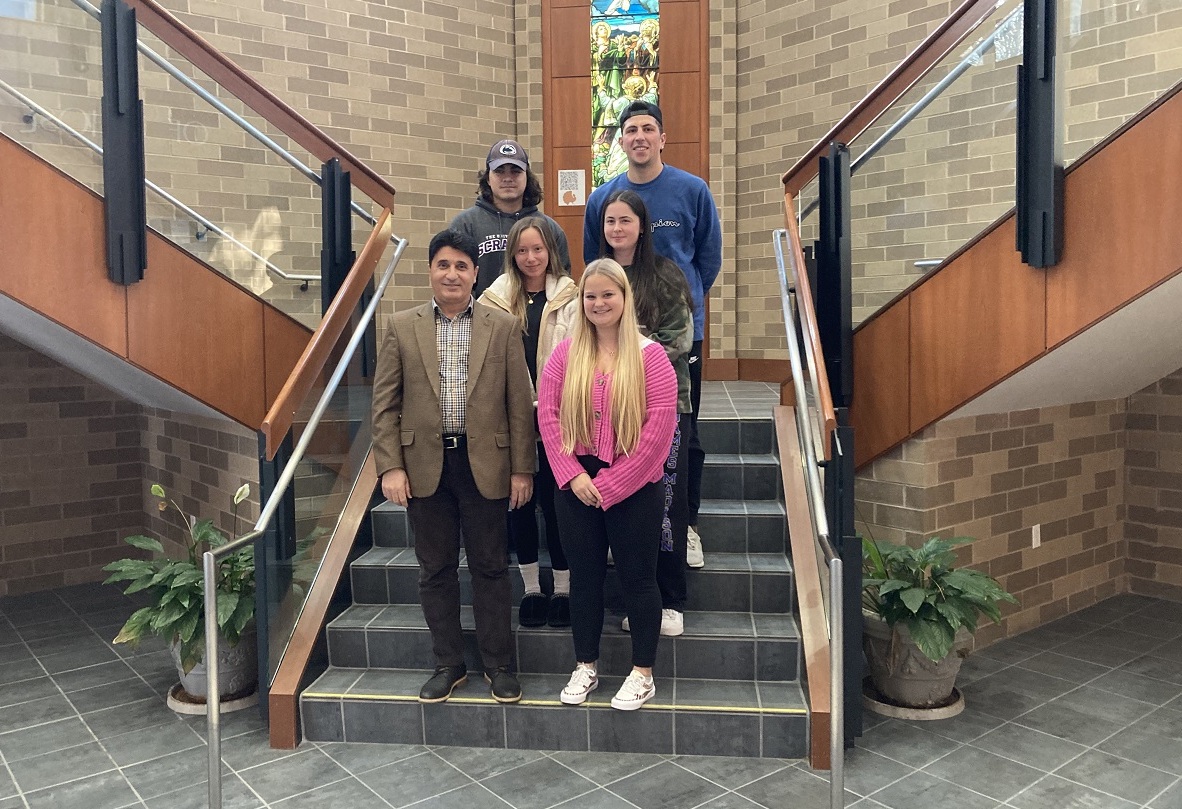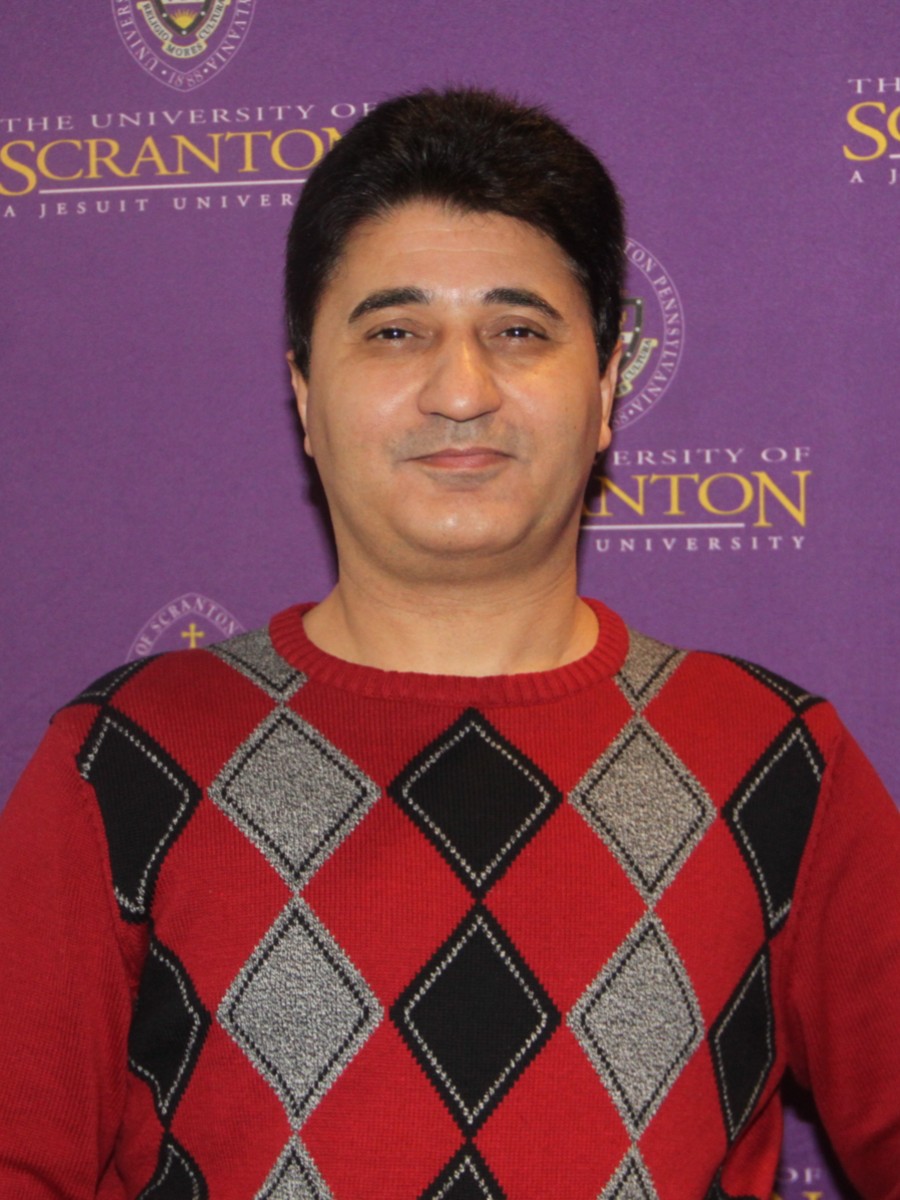Business Students Discover Real-world Uses for NASA Tech

By: Kelly Nee '23, student correspondent
Using products patented by NASA, University of Scranton students put into practice the principles they learn in Dr. Peter Andersen’s marketing and consumer behavior courses.
Dr. Andersen said more than 100 of his students have participated in NASA's Technology Transfer University (T2U) since spring 2021 when Scranton became the second school in Pennsylvania to engage in the project. Prior to that Lehigh University took part and in 2022, the University of Pennsylvania joined.
“…most universities use it for engineering students, while we are among very few business schools engaged in the program,” said Andersen, assistant professor of marketing in the department of Management and Marketing.
NASA's Technology Transfer University (T2U) encourages students to review its extensive patent portfolio and identify potential real-world applications for the technologies. Students can perform market research and gather consumer behavior data to formulate viable economic models, utilizing NASA-developed technology as the basis for a sustainable business case, according to technology.nasa.gov.
In Dr. Andersen’s spring 2021 Consumer Behavior courses, students developed business cases centered on NASA's inventions with patents that ranged from Freeze-Resistant Hydration Systems to Ammonia Recycling Techniques and Manufacturing Robots.
“Each team has the opportunity to choose the patent they are interested in ... some specialize in aviation and aerospace while others engage in power generation, robotics, electronics, healthcare, and environmental sciences," said Dr. Andersen.
That semester, one student chose to explore the potential of using NASA's Portable Wireless Signal Booster as a means for improving wireless connection to those in regions with poor connectivity. They also considered a secondary market for outdoor recreation enthusiasts who enjoy remote outdoor activities such as hiking and fishing.
In fall 2021, Andersen incorporated the NASA project into the Introduction to Marketing course.
"In Consumer Behavior courses, the group project focuses on identifying consumer segments to which entrepreneurs may target the NASA patented products. Students practice the knowledge they gained during the course to analyze the characteristics of consumer segments and the strategies that marketers can apply to run a profitable and sustainable business.
“In Introduction to Marketing courses, the group project is a semester-long effort to prepare a marketing plan for a firm that decides to produce and market one of the NASA patented products. They must follow a detailed outline with specific sections on situation analysis, resource analysis, targeting, brand positioning, and marketing mix strategies.”
 Dr. Andersen, shown, said that in spring 2022, students in each class began having Zoom meetings with NASA managers before starting their project to get the information they need, and after they submit their written project to present their main findings. Currently, 20 students in his Introduction to Marketing class are grouped into seven teams that each work on a separate patent.
Dr. Andersen, shown, said that in spring 2022, students in each class began having Zoom meetings with NASA managers before starting their project to get the information they need, and after they submit their written project to present their main findings. Currently, 20 students in his Introduction to Marketing class are grouped into seven teams that each work on a separate patent.
“The results of each group project are sent directly to NASA Technology Transfer Program managers who review them, analyze the progress and provide feedback or required changes, if needed. Students are not only graded for their team projects, but beginning in spring 2022, NASA began issuing certificates for each student who participated in the projects, making it more appealing,” said Dr. Andersen.
“This will be a great opportunity for students to build stronger resumes while joining job markets and sharing their experience with hiring managers during job interviews. NASA has also provided opportunities for virtual internships and support for patent applications to encourage students."
View a complete list of schools collaborating in NASA’s T2U program.
Dr. Andersen credited Dr. Satya P. Chattopadhyay, Ph.D., the department chair of Management and Marketing and the Dean’s Office of The Kania School of Management for their support during the project. He also expressed gratitude to Katrina Young and her NASA Technology Transfer Team at Langley Research Center in Virginia.
He’s already looking to the future:
"My goal is to engage more students and improve the quality of students’ work. ... I have already conducted some research on the aviation industry and customer satisfaction with airline services.”"After completing the first projects in two Consumer Behavior classes in spring 2021, NASA placed the name of our university among the universities that collaborate with NASA on the Technology to University project (T2U)."






